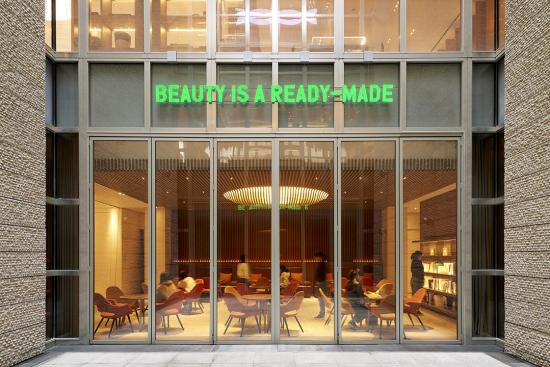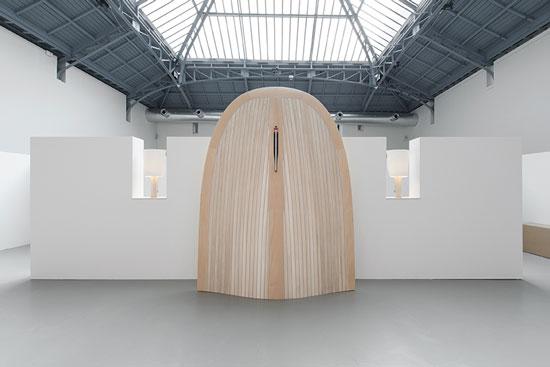At La Verrière, the start of 2024 is marked by a selection of elaborate compositions that playfully unbalance visitors through assemblages of fragile materials, which incorporate organic elements here and there. Joël Riff describes these works by Koenraad Dedobbeleer, a Belgian artist born in 1975 in Halle to the south of Brussels, as akin to "panoplies of objects". This art of assemblage is extended through the presence of "a constellation of signatures, a European compendium that Dedobbeleer has organised to freely articulate his own objects". Indeed, this exhibition brings together some twenty creators from a range of backgrounds. Their pieces draw on Koenraad Dedobbeleer's unique recipes and interact with his hybrid creations, painting a portrait of an artist sensitive at once to particular motifs and modernist rigour. Dedobbeleer's studio is a kitchen in the noblest sense of the word, one open to all influences that nourish a daily practice and cultivate a particular artistic curiosity. It serves up a joyful relationship with the world that is reflected in the title of the exhibition, "Emi e dames messeur", a phrase borrowed from an old shop sign that breathes poetry into his weekly routine.
La Verrière will then play host to an artist whose work emerges as much from addition as it does subtraction. Emmanuelle Castellan, who was born in 1976 in Aurillac in the centre of France, works on the surface of her paintings in all their depth. She superimposes layers, separates them out, covers them up and then digs through them, sometimes going as far as slicing through the surface of the canvas itself. With these “cuts”, as the artist calls them, the third dimension surfaces in the heart of the canvas, allowing other perspectives to emerge. Entitled "Spektrum", the exhibition plays upon this polysemy, which is also present in the forms and silhouettes that inhabit the paintings even as their contours seem to refuse all definite form. To accompany the paintings of Emmanuelle Castellan, who today lives and works in Berlin, curator Joël Riff has brought together five other creators – Johannes Nagel, Dagobert Peche, Muriel Pic, Norbert Schwontkowski and Walter Swennen – beneath the skylight of La Verrière who share the artist’s German tropism and whose respective explorations – through painting, ceramics, decorative arts and writing – add further breadth to the spectrum of her work.
Starting with its very title, “Esperluette” [“Ampersand”], the sixth proposition by curator Joël Riff for La Verrière once again foregrounds collaboration. This is a notion that underpins his programming as well as the pratice of artist Hélène Bertin (b. 1989), whose work is featured in this exhibition produced in partnership with the Académie de France in Rome. Her oeuvre draws on encounters with other artists and craftspeople who lend their skills and expertise to contribute to her research. Her artistic language indeed unfolds through these moments of exchange, as well as through the forms borrowed from nature that she captures with gestures of the utmost respect. At La Verrière, she presents a series of works created during her residency from autumn 2023 to summer 2024 at the Villa Medici, home of the French Academy in Rome, and the various collaborations that she undertook during her stay. Works by carpenter Anne Blanès, botanist Aline Cado, composer Marion Cousin, potter Caroline Nussbaumer and plant-dyer Lola Verstrepen are all brought together here alongside the work of Hélène Bertin herself under the auspices of the titular glyph ‘&’. As Joël Riff explains, “a community manifests itself through the things that it creates, assembling objects in a branching network of production”. The result is an exhibition that is at once plural and imbued with a clear shared sensibility.





















